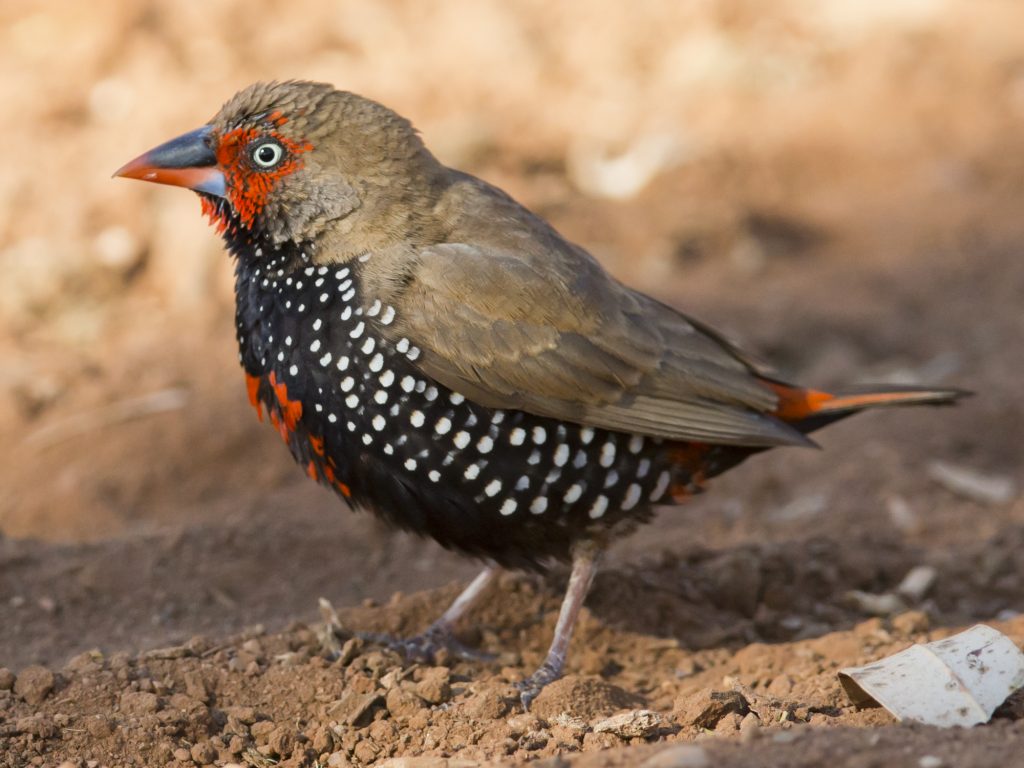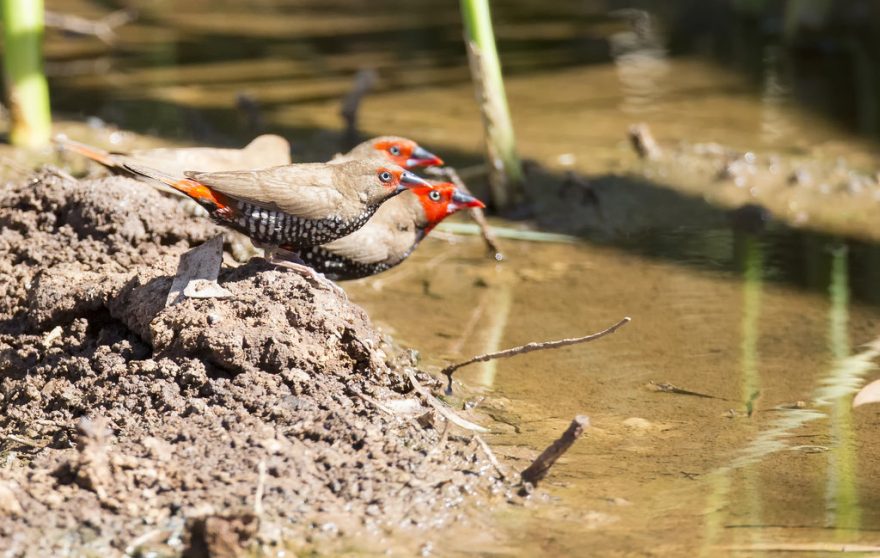The Painted firetail finch, known commonly as the “emblema finch” is a common species found throughout the arid and semi-arid interior of Australia. It is popular in the pet trade thanks to its low care requirements, ease of breeding, and placid nature.

Housing & Compatibility
Painted firetail finches can be housed successfully as single pairs, a colony, or as part of a mixed collection. They prefer a large planted aviary, but are generally tolerant of smaller aviaries. Some breeders find they perform better when housed in small groups of 2-3 pairs.
Painted firetail finches are generally very placid in a mixed aviary situation. They can be successfully housed with most placid finches, quail, doves, and (space permitting) Neophema parrots.
The Painted Firetail’s natural habitat consists of dry arid desert. These conditions should be emulated in the aviary, as the species is uniquely susceptible to waterborne parasites and diseases. Sand or fine pebble is their preferred substrate and they prefer dry native Australian plants – both for perching and nesting. Wild Painted finches nest in Spinifex bushes, however domesticated birds will readily use a wicker nesting basket.
Diet & Feeding
A quality seed mix including canary seed, various millets and panicum forms the basis of the painted firetail’s diet. Seed lacks many essential vitamins and minerals which must be compensated for by introducing other foods. Sprouted seed increases the nutritional value of seed and is a cheap way to improve your birds health. Freshly grown green seed heads should also be offered frequently.
Leafy greens such as kale, bok choy, endive and silverbeet are in important part of the painted firetail’s diet. Spinach can also be given, but only sparingly as it can contribute to calcium deficiency.
Live food will be consumed during the breeding season. Small mealworms, maggots, and termites are most frequently given. Commercial soft foods—such as egg and biscuit mix—can also be offered.
Do not feed anything from the list of forbidden foods.

Breeding
The Painted finch is a reasonably easy finch to breed, with no special dietary requirements beyond seed and water. They don’t stick to a strict breeding cycle, instead breeding opportunistically whenever there’s adequate resources and good weather.
They build nests in both dense shrubs and commercial wicker nest cups. The nest is quite an elaborate structure making use of a variety of materials. They often use small stones or pieces of wood to form a foundation, then use leaves, twigs and grass to complete a dome.
A clutch typically consists of 3-6 eggs, which are incubated by both parents. The eggs usually take 14-16 days to hatch, with young fledging three weeks later. Painted firetail finches are reasonably tolerant of nest inspections, but it should still be avoided unless completely necessary.
Mutations
An orange mutation, where the red plumage is completely replaced with orange/yellow feathers, is quite common. This mutation is believed to occur in the wild, however this might be the results of aviary escapees interbreeding with the wild population.
Cream and fawn mutations also exist, but remain quite rare.
Red-fronted painted firetails also exist. This refers to birds whose red front feathers extend from the face all the way down to the belly. Whether this qualifies as a true mutation, or the product of good quality genes, remains the topic of debate.
Sexing
Females don’t have red colouring on their throats, while males do.
Health
Painted finches spend a great deal of time on the ground, making them especially prone to parasite infections. A strict worming and parasite control routine is essential.
The Painted finch does not tolerate dampness or high humidity in the aviary.
A well cared for painted firetail finch can be expected to live for 7-8 years.